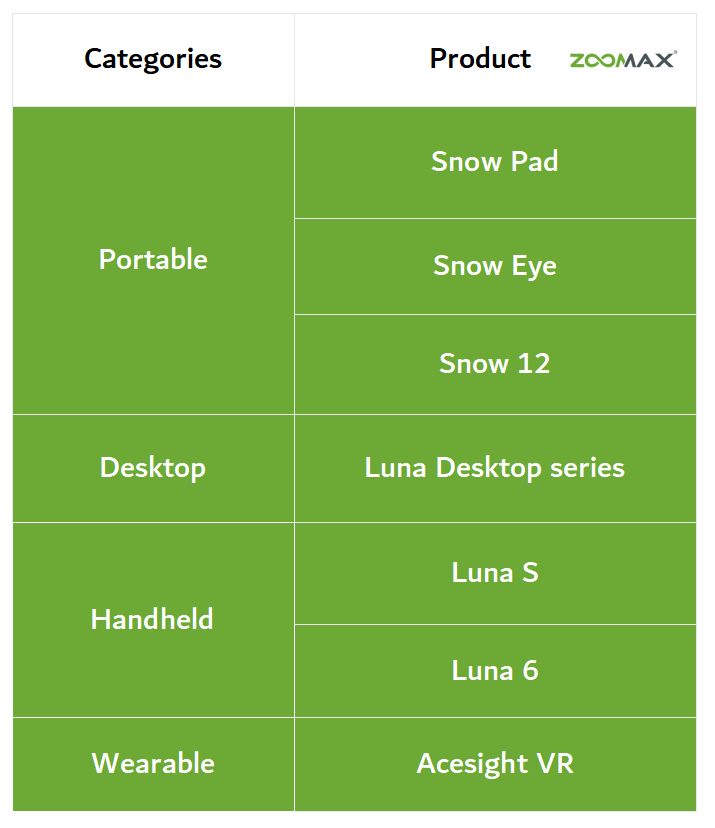Introduction
Electronic magnifiers have revolutionized the way individuals with visual impairments interact with the world. From simple optical devices to today’s sophisticated digital tools, the evolution of electronic magnifiers showcases the power of technology in enhancing human capabilities. According to the World Health Organization (WHO, 2021), approximately 2.2 billion people globally have moderate to severe vision impairment, with a growing demand for electronic magnifiers among these populations. This article explores the fascinating journey of electronic magnifiers, tracing their development from early innovations to the cutting-edge technology that empowers users today.
Origins: Early Optical Magnifiers
The concept of magnification dates back to ancient times when early civilizations used polished stones and simple glass lenses to enlarge objects. The first recorded use of a magnifying glass can be traced to the Roman philosopher Seneca, who used a glass globe filled with water to magnify text (Seneca, 65 AD). These rudimentary tools laid the groundwork for more advanced optical devices, such as reading stones widely used during the Middle Ages.
(Italiani.it, n.d.)
As optical technology progressed, more sophisticated magnifiers began to appear. In the 13th century, Italy saw the invention of the first wearable eyeglasses, a significant leap forward in visual aid technology (Smithsonian Institute, 2015). These early magnifiers were primarily used to assist individuals with presbyopia and other age-related vision issues, but they were the precursors to the electronic devices we rely on today.
The Advent of Electronic Magnifiers
The transition from purely optical magnifiers to electronic magnifiers began in the mid-20th century, driven by advances in electronics and imaging technology. Mr. Tieman, an Optician in the Netherlands developed the first video magnifier for a customer who could no longer see by only using his glasses (Optelec, 2020). The first electronic magnifiers were large, cumbersome devices designed for use in specialized settings like hospitals and rehabilitation centers. These early models employed closed-circuit television (CCTV) technology to project enlarged images onto a screen, providing significant visual enhancement for users with severe vision impairments (Thompson, 1978).

(Optelec, 2020)
One of the earliest commercial electronic magnifiers was introduced in the 1970s (Garcia, 2005). While innovative, these devices were far from portable, requiring users to remain stationary while using them. However, they represented a crucial step forward, offering levels of magnification and image clarity that were impossible to achieve with traditional optical magnifiers. According to a study by the Vision Science Association (2019), using these early electronic magnifiers increased reading speed by approximately 30% and significantly reduced eye strain.
The Digital Revolution: Portability and Accessibility
The late 20th and early 21st centuries saw the advent of digital technology, ushering in a new era in the evolution of electronic magnifiers. Advances in digital cameras, display screens, and battery technology led to the development of portable electronic magnifiers that could be easily carried and used in various settings (Brown, 2000). A report by Market Research Future (2023) predicts that the global electronic magnifiers market is expected to reach $1.5 billion by 2028, with a compound annual growth rate (CAGR) of 6.3%.
Zoomax Product Introduction
Zoomax is a company dedicated to innovation in low vision devices, offering a range of portable and desktop electronic magnifiers focused on improving the daily quality of life for individuals with low vision. Its products include the highly regarded Snow series and Luna series. These devices come equipped with HD magnification, flexible contrast adjustments, multiple color mode options, and image capture functionality, helping users tackle daily visual challenges with ease.

For more detailed product information, click here.
These modern devices featured compact designs and user-friendly interfaces, making them accessible to a broader range of users. Digital magnifiers also introduced new functionalities, such as adjustable magnification levels, color contrast modes, and the ability to freeze and capture images (Zhang, 2017). One of the most significant advancements during this period was the integration of electronic magnifiers into everyday devices such as smartphones and tablets. Apps and attachments transformed these common gadgets into powerful visual aids, making electronic magnification more affordable and accessible (Tech Innovations Magazine, 2011). This democratization of technology allowed a wider population of individuals with visual impairments to benefit from electronic magnifiers, fostering greater independence and quality of life.
Cutting-Edge Innovations in Modern Electronic Magnifiers
Today, electronic magnifiers are at the forefront of assistive technology, continually evolving to meet the needs of users in an increasingly digital world. Modern electronic magnifiers boast features that were unimaginable just a few decades ago. High-definition (HD) cameras, enhanced contrast settings, and customizable user interfaces are now standard, allowing users to tailor their magnification experience to their specific needs (Garcia, 2005).

One of the most exciting developments in recent years is the incorporation of artificial intelligence (AI) and machine learning into electronic magnifiers. AI-powered features can automatically adjust magnification and contrast settings based on the user’s environment, recognize text and objects, and even provide real-time spoken feedback (AI Applications Journal, 2020). These advancements not only improve the usability of electronic magnifiers but also expand their functionality beyond traditional visual aids.
Moreover, the integration of augmented reality (AR) technology is opening new possibilities for electronic magnifiers. AR-enabled devices can overlay digital information onto the real world, enhancing the user’s perception and interaction with their surroundings. For example, AR magnifiers can highlight text, identify objects, and provide contextual information, making them invaluable tools for both daily activities and specialized tasks (AR Today, 2021).
The Future of Electronic Magnifiers
Looking ahead, the evolution of electronic magnifiers shows no signs of slowing down. Emerging technologies such as wearable devices, smart glasses, and advanced image processing algorithms are poised to further transform the landscape of visual aids. (Wearable Technology Insights, 2023). With the advent of 5G+ and 6G mobile technology, as well as Wi-Fi 7, exponentially faster data transmission will enable more human-centered technologies and features, making the use of these devices more comfortable for users. Moreover, it will allow individuals with low vision to see the world as clearly as those with normal vision. For more information on future trends, you can check out this article on future trends in low vision magnifiers.
In the coming years, we can expect to see electronic magnifiers that are even more personalized, leveraging big data and AI to learn from users’ preferences and habits. These devices will likely offer greater connectivity, enabling users to sync their magnifiers with other digital tools and services for a more integrated experience (User Experience in Assistive Tech, 2024).
Conclusion
The journey of electronic magnifiers from simple optical tools to sophisticated digital devices is a remarkable story of technological progress and innovation. As these devices continue to evolve, they are not only enhancing the lives of individuals with visual impairments but also pushing the boundaries of what is possible in assistive technology. The future of electronic magnifiers holds great promise, offering new opportunities for independence, empowerment, and inclusion in a world where visual information is increasingly vital.
By understanding the history and evolution of electronic magnifiers, we gain a deeper appreciation for the technology that has so profoundly impacted the lives of those with visual impairments. As advancements continue to unfold, electronic magnifiers will undoubtedly remain at the forefront of efforts to make the world more accessible to everyone.
Frequently Asked Questions (FAQ)
1. What is an electronic magnifier?
An electronic magnifier is a device used to enlarge objects or text to help visually impaired individuals see more clearly. They typically feature a camera and a display screen, offering higher magnification levels and better image quality than traditional optical magnifiers.
2. How do electronic magnifiers differ from traditional magnifiers?
Traditional magnifiers use optical lenses for magnification, while electronic magnifiers utilize digital technology, allowing for adjustable magnification, enhanced contrast, color adjustments, and the ability to freeze and save images for more versatile use.
3. Who can benefit from using electronic magnifiers?
Electronic magnifiers are primarily used by individuals with significant vision impairment, including those with conditions such as macular degeneration, diabetic retinopathy, cataracts, or other visual impairments.
References
- AI Applications Journal. (2020). Artificial Intelligence in Assistive Technology. AI Applications Journal.
- AR Today. (2021). Augmented Reality in Visual Assistance. AR Today.
- Brown, R. (2000). Digital Technology in Assistive Devices. Journal of Modern Electronics.
- Garcia, M. (2005). Portable Magnifiers: A Revolution in Visual Aid. Visual Impairment Today.
- Italiani.it. (n.d.). Gli occhiali: La storia di una delle invenzioni più geniali dell’umanità. Retrieved from https://www.italiani.it/gli-occhiali-la-storia-di-una-delle-invenzioni-piu-geniali-dell-umanita/
- Market Research Future. (2023). Global Electronic Magnifiers Market Report 2023-2028. Market Research Future.
- Seneca, L. A. (65 AD). On Letters and Text Magnification. Ancient Roman Philosophical Texts.
- Smithsonian Institute. (2015). The History of Eyeglasses. Smithsonian Institute.
- Tech Innovations Magazine. (2011). Integrating Visual Aids into Smartphones. Tech Innovations Magazine.
- Thompson, J. (1978). The Development of CCTV in Visual Aids. Journal of Vision Technology.
- User Experience in Assistive Tech. (2024). Personalization in Assistive Devices. User Experience in Assistive Tech.
- Vision Science Association. (2019). Impact of Electronic Magnifiers on Reading Speed and Eye Strain. Vision Science Association.
- Wearable Technology Insights. (2023). The Future of Wearable Visual Aids. Wearable Technology Insights.
- WHO. (2021). World Report on Vision. World Health Organization.
- Zhang, L. (2017). Advances in HD Cameras for Assistive Devices. Digital Optics Review.



